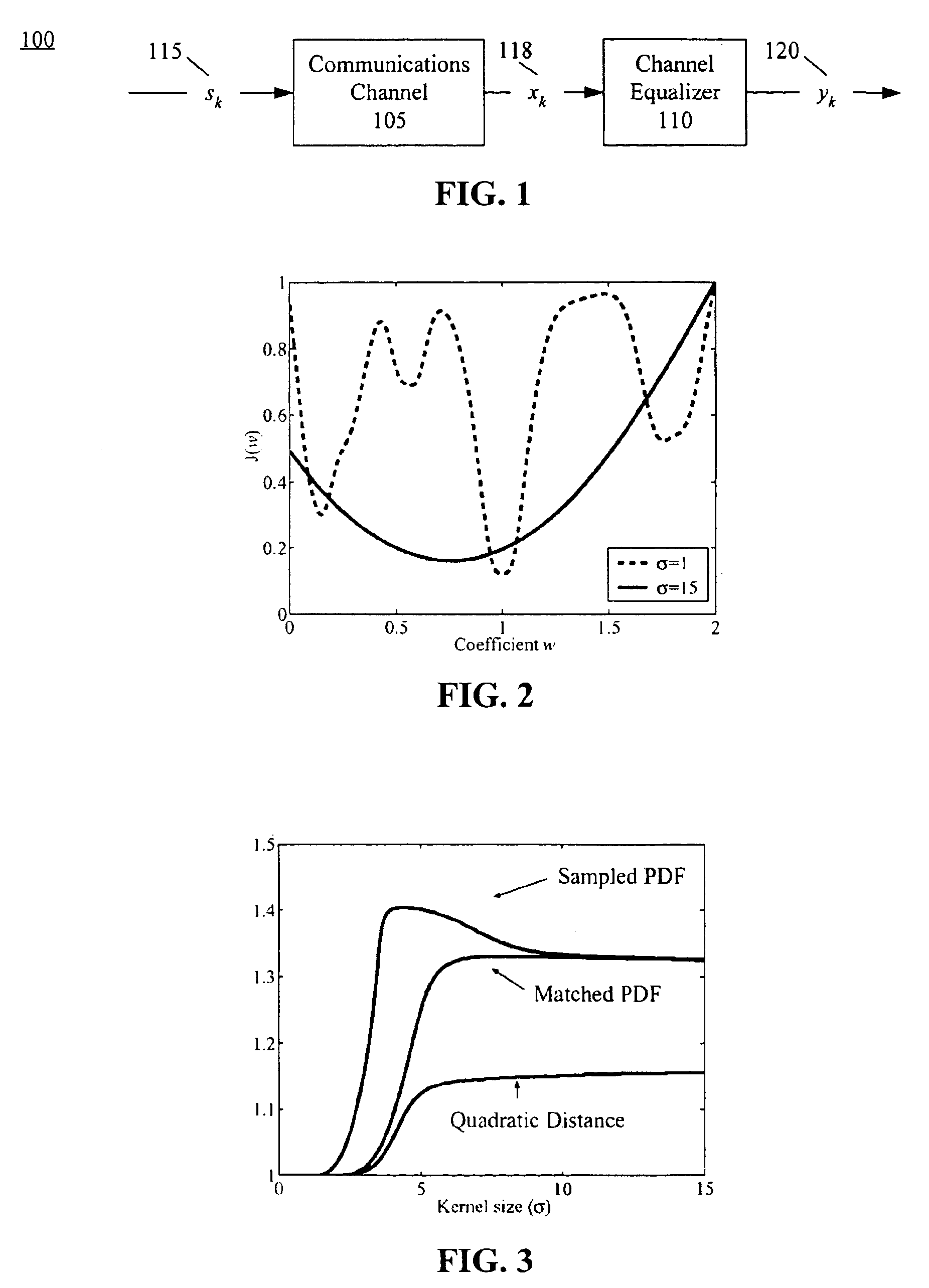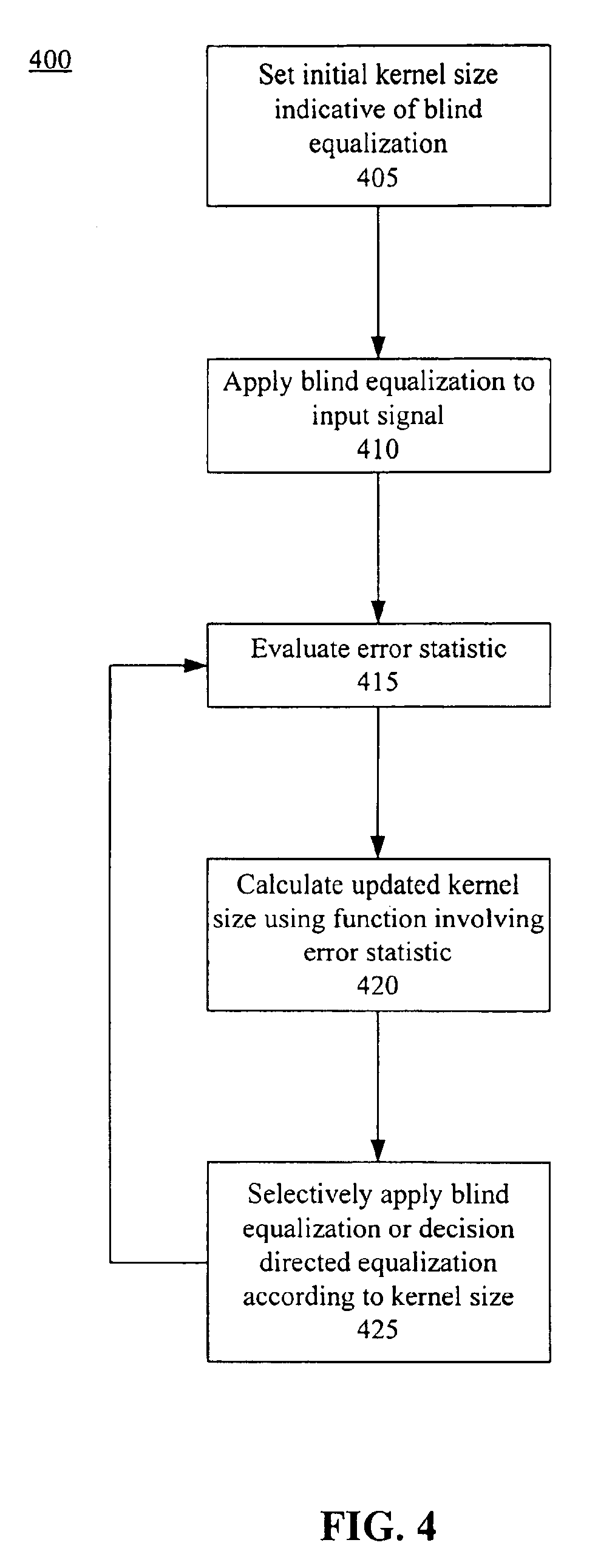Blind equalizers using probability density matching and parzen windowing
a probability density matching and equalization technology, applied in the field of communication, can solve the problems of difficult to recover original data, limited knowledge of transmitted sequence probabilistic or statistical properties, and high number of data symbols, so as to reduce the number of samples required to blindly identify the channel inverse for equalization and increase efficiency
- Summary
- Abstract
- Description
- Claims
- Application Information
AI Technical Summary
Benefits of technology
Problems solved by technology
Method used
Image
Examples
Embodiment Construction
[0022]FIG. 1 is a schematic diagram illustrating one embodiment of a system 100 in accordance with the inventive arrangements disclosed herein. As shown, the system 100 can include a communication channel 105 and a channel equalizer 110.
[0023]The communication channel 105 can be any network communication channel for digital communications including, but not limited to, wired Local Area Networks (LAN's), Digital Subscriber Line (DSL), cable networks, telephone lines for conventional modems, and the like. It should be appreciated that the inventive arrangements disclosed herein can be applied to both linear and non-linear communication channels. For purposes of illustration only, however, a linear channel has been assumed. Using a complex baseband representation, the communication channel 105 can be represented as: xk=∑n=0Lh-1hnsk-n+ek(1)
where the transmitted symbol sequence sk, or input signal 115, is assumed to take iid complex values from a discrete finite alphabet of symbols ref...
PUM
 Login to View More
Login to View More Abstract
Description
Claims
Application Information
 Login to View More
Login to View More - R&D
- Intellectual Property
- Life Sciences
- Materials
- Tech Scout
- Unparalleled Data Quality
- Higher Quality Content
- 60% Fewer Hallucinations
Browse by: Latest US Patents, China's latest patents, Technical Efficacy Thesaurus, Application Domain, Technology Topic, Popular Technical Reports.
© 2025 PatSnap. All rights reserved.Legal|Privacy policy|Modern Slavery Act Transparency Statement|Sitemap|About US| Contact US: help@patsnap.com



